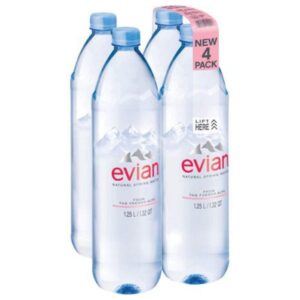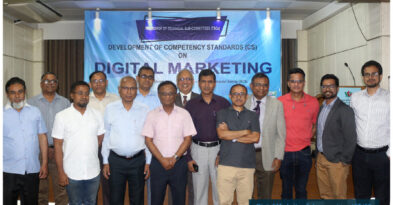Branding is one of those marketing concepts that is a bit vague and can quickly become confusing, even for people who have studied marketing (including me). So, I thought to write it down in simple words with examples for my own clarity and then thought why not share it with others who may sometime get puzzled like me. I hope it will work as a ready reference whenever needed!
In order to understand the concept of branding, first we need to know what products and brands are. Let’s start!
What is a Product?
“Broadly, a product is anything that can be offered to a market to satisfy a want or need, including physical goods, services, experiences, events, persons, places, properties, organizations, information, and ideas” – Kotler & Keller, 2015.
This means that a product can be anything from a hotel stay, a reality show on tv, an app, a language course, to clothes, food, a toothbrush, etc.
Let’s take water as an example to illustrate the definition of a product and the role it occupies in defining branding:
 Water is a free resource that every human being needs to live and survive. Yet it became a product the day humans and companies started to commercialize it, for example by selling mineral water in glass and plastic bottles.
Water is a free resource that every human being needs to live and survive. Yet it became a product the day humans and companies started to commercialize it, for example by selling mineral water in glass and plastic bottles.
 But water always looks the same, isn’t it? It is liquid and transparent. So, how can different companies sell the same product but still convince people to purchase their bottled water instead of the one from the competition?
But water always looks the same, isn’t it? It is liquid and transparent. So, how can different companies sell the same product but still convince people to purchase their bottled water instead of the one from the competition?
The answer is: by creating a brand.
What is a Brand?
“A brand is a name, term, design, symbol, or any other feature that identifies one seller’s good or service as distinct from those of other sellers” – American Marketing Association.
You can consider a brand as the idea or image people have in mind when thinking about specific products, services and activities of a company, both in a practical (e.g. “the shoe has farm grip”) and emotional way (e.g. “the shoe makes me feel confident”). It is therefore not just the physical features that create a brand but also the feelings that consumers develop towards the company or its product. This combination of physical and emotional cues is triggered when exposed to the name, the logo, the visual identity, or even the message communicated.
A product can be easily copied by other players in a market, but a brand will always be unique. For example, Thumbs Up and RC Cola taste very similar, however for some reason, some people feel more connected to Thumbs Up, others to RC Cola.
Let’s illustrate this again with the water example. The product sold is water, but in order to convince people to purchase a particular water, companies developed different water brands, such as Evian, Mum, Fresh or Kinley. And each one of these brands provides a different meaning to the product water:
- Evian makes you feel young
- Mum is crystal clear
- Kinley tried to capture on confidence
…and so on.
In the end, a brand is a person’s gut feeling about a specific product or company. Each person creates his or her own version of it, and some brands increase or decrease in popularity because of how consumers feel about them.
What is Branding?
“Branding is endowing products and services with the power of a brand” – Kotler & Keller, 2015
Branding is the process of giving a meaning to specific organization, company, products or services by creating and shaping a brand in consumers’ minds. It is a strategy designed by organisations to help consumer to quickly identify and experience their brand, and give them a reason to choose their products over the competition’s, by clarifying what this particular brand is and is not. It is the multi-phased process of securing brand positioning (i.e. where you want to be in the minds and hearts of your customers), and includes key strategies around the developmental, operational, promotional, organizational, and cultural building-blocks of brand development.
The objective is to attract and retain loyal customers and other stakeholders by delivering a product that is always aligned with what the brand promises.
Who does it affect?
- Consumers: As discussed above, a brand provides consumers with a decision-making-shortcut when feeling indecisive about the same product from different companies.
- Employees/shareholders/third parties: Besides helping consumers to distinguish similar products, successful branding strategies are also adding to a company’s reputation. This asset can affect a range of people, from consumers to employees, investors, shareholders, providers, and distributors. As an example, if you don’t like or don’t feel connected to a brand, you would probably not want to work for it. However, if you feel like the brand understands you and offers products that inspire you, you would probably desire to work for it and be part of its world.
How can it be done?
Companies use different tools to create and shape a brand. For example, branding can be achieved through following (using all or some of them):
- Defining the brand: purpose, values, promise
- Brand positioning statement: aligning with the definition
- Brand identity: name, tone of voice, visual identity design (which includes the logo design, color palette, typographies…)
- Product and packaging design: look and feel
- Pricing strategy: premium, costly, cheap, value for money
- Advertising and communications: TV, radio, magazines, outdoor ads, online…
- Association: sponsoring events and partnerships
- In-store experience: look & feel, shelving, display, ease of purchase, to expertise and attitude of salespeople, etc.
- Online experience: website experience, social media experience, app experience, etc.
- Customer service: pre, during and post purchase
- Workspace experience and management style
In our example of branding water, packaging design and advertising are perhaps the most powerful tools used by marketers:

- Packaging design is the silent salesman that will grab busy consumers’ attention in-store. It informs consumers about the product’s properties and visually differentiates the brand from the competition on-shelf. A successful example in my eyes is Evian Water, which managed to create a beautiful bottle design that perfectly reflects the brand’s values: purity is reflected through the image of mountains and transparency effects, lighter blue colour use in the packaging made it look fresh, red colour logo made the name highly visible.
- Advertising is a powerful tool to create and shape a brand universe as it is very visual and tells a story about the product/company.
“A brand is how it is advertised”― David Ogilvy
Here are some examples of branding water through advertising:
Evian makes you feel young:
Mum is crystal clear
Fresh is safe
Conclusion:
In very simple words, a product is what you sell, a brand is the perceived image of the product you sell, and branding is the strategy to create that image.
I hope this article helped you to have a clearer idea of what branding means. If you feel this article will help others be kind to share with them. And, if you have any comments or suggestions to improve the article, please don’t hesitate to share your thoughts in the comments!
—————————————————————————————–
Note: this article was originally published in thebrandingjournal.com by Marion, the Founder of The Branding Journal. I have slightly edited it for the audience in local market in Bangladesh by changing the examples relating to local brands.
Pictures from: chaldal.com, daraz.com, Boca Raton Magazine.
Sources: thebrandingjournal.com, Kotler & Keller: Marketing Management (2015), American Marketing Association (AMA),




Leave a Reply